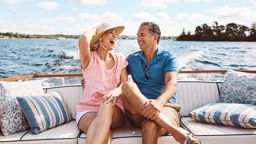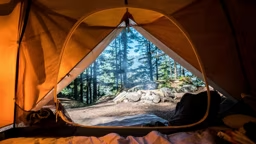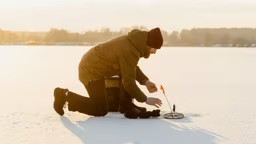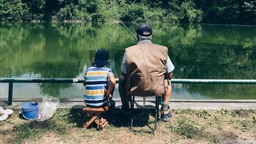
Several summers ago while I was at the cabin, I was so eager to cool off that I impetuously dove into the refreshing lake – forgetting that my favorite pair of sunglasses was resting on top of my head. The moment I came up for air, I realized what I’d done and frantically scanned the water around me for my cherished Oakleys, but they were gone in 50-plus feet of water. I didn’t feel like shopping around for another good pair of sunglasses, so I went to the drug store and bought the first pair I saw. After a day of boating and skiing, my head throbbed and my eyes ached. Make sure you buy the right pair of shades for you by following these tips:
Quality Counts
That day I learned a lesson in optical quality. I thought that as long as I had some sort of tinted plastic shielding my eyes, my peepers were duly protected. Nope. In fact, according to the national nonprofit Prevent Blindness America, poor-quality glasses may be more harmful than no glasses at all. This is because sunglasses without UV protection shade the eyes from the bright sun but cause the pupils to dilate, thereby allowing in more damaging rays.I knew that UV rays could do a number on unprotected skin, but I didn’t realize its potential to damage unprotected eyes. Research shows that prolonged exposure to UV rays can contribute to various ocular disorders such as cataracts, macular degeneration, cancer of the eyelid and corneal sunburn.
Who's at Risk?
People of every ethnicity, gender and age should protect their eyes, but those whose work or recreation involves lengthy exposure to sunlight need to be especially vigilant about sun protection. This group could include cabin lovers who tend to spend a lot of time outdoors.
“Since UV radiation is reflected from surfaces such as snow, sand and water, the risk [of UV exposure] is particularly high on ski slopes, on the beach or while boating,” says Sarah Hecker, director of media relations for Prevent Blindness America.
Fortunately, you can significantly reduce your chances of developing eye problems simply by donning a quality pair of sunglasses year-round – starting from childhood.
UV eye damage is cumulative, so it’s wise to start protecting eyes at an early age.
Shopping for Glasses
It’s easy to get overwhelmed by the many types of lenses: mirrored, clip-on (fit over prescription glasses), gradient (darker at the top, lighter at the bottom), photochromic (automatically darkens in bright light and lightens in dim light) and polarized (reduces horizontally reflected glare). There also are multiple tint options available.
When choosing glasses, consider when you’ll be using them. For example, gradient glasses are good for driving whereas polarized lenses are ideal for water sports such as boating, skiing and fishing. Many fishermen refuse to leave the dock without polarized lenses because the lenses enable them to see more clearly beneath the water – things like bedding bass, for instance.
“Rock climbers and cyclists should choose frames that are secure because these sports can create serious injury if concentration is lost while a participant is reaching to adjust poor or loose-fitting frames,” says Ann Laurenzi, an optometrist at The Cleveland Clinic in Cleveland, Ohio.
Snowmobilers and downhill skiers, who are surrounded by blinding white powder, often opt for wraparound, mirrored lenses for maximum glare protection and/or amber-tinted glasses to help them spot bumps on the terrain. In addition, golfers can see balls more easily with an amber-tinted lens.
Before buying sunglasses, consider the following tips:
- Try on several pairs. Search until you find a pair that’s comfortable. They should fit snugly against the bridge of your nose.
- Pick a pair that suits your. Are they flattering? Experts advise focusing solely on UV protection, but if you don’t feel attractive in your shades, they’ll likely end up in a drawer instead of on your face.
- Try them out. Do you plan to run in them? If so, take a jog around the store to be sure they fit securely (remember that the bridge of your nose may sweat during a workout, making plastic shades more prone to slide).
- Step outside to test color contrast. I once bought a pair of sunglasses based solely on how cool they looked, then realized later that the entire landscape appeared yellow through these amber-tinted shades.
- Get proper protection. Look for a label that states “99 to 100 percent UV protection” (or “UV absorption up to 400 nm”). The tint of the lens doesn’t correlate with the protection level. In other words, darker lenses don’t necessarily keep out more light.
See also A Playlist for Relaxing at the Cabin
Sunglass Tints 101
Sunglass tints come in many colors. But the four most common are amber, brown, rose and gray. Some sunglasses, especially sport models, come with interchangeable lenses in different tints. Which color should you use when? Read on for color of tint, purpose of tint and for what condition to use the tint.
- Amber adds contrast but distorts color perception (everything appears golden). Best for flat/poor light; hazy.
- Brown brightens in cloudy conditions (good for someone who is not too glare-sensitive). Best use when overcast.
- Rose brightens in cloudy conditions but dims in sunnier conditions (lessens glare, but on a low-glare day, it'll brighten colors there by improving contrast). Best use when overcast.
- Gray reduces glare without altering color perception (good for someone who is glare-sensitive). Best use in bright sunlight.
Freelancer Christy Heitger-Ewing never recovered her Oakleys, though she’s certain there’s a walleye swimming around Mullett Lake who’s stylin’!










